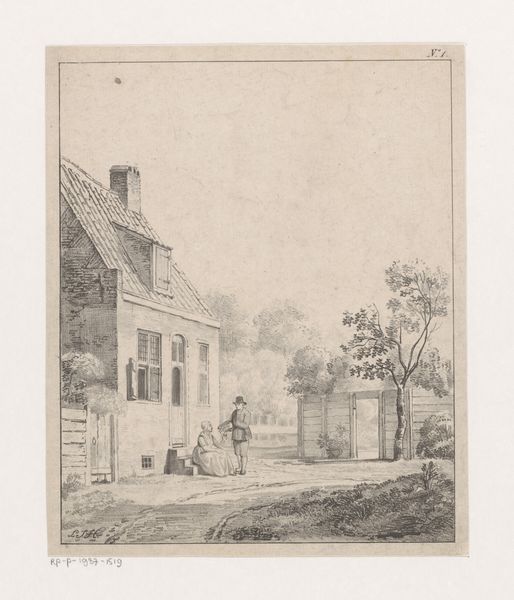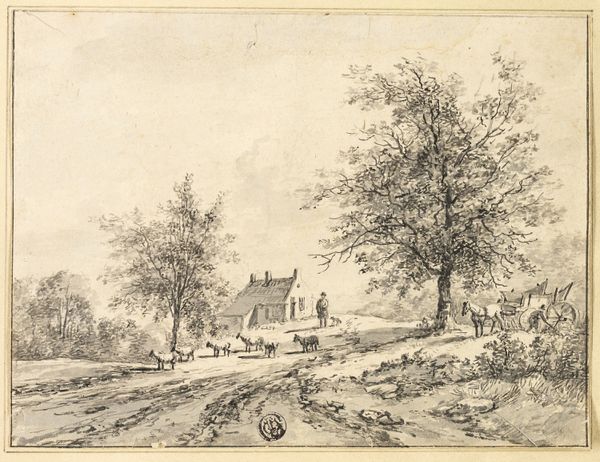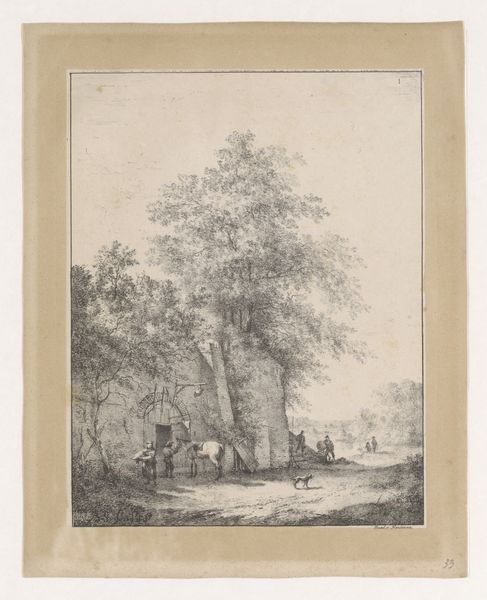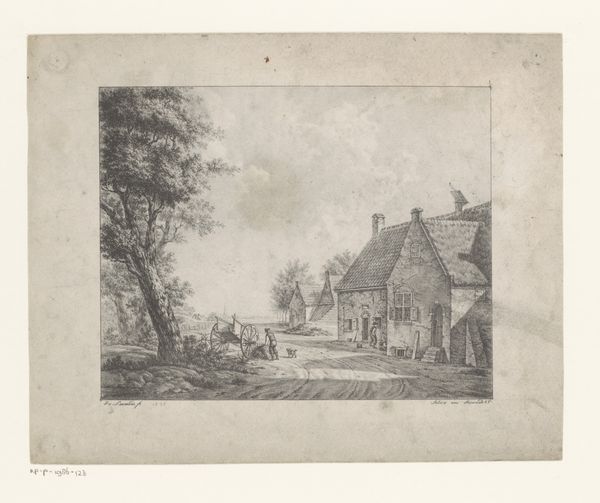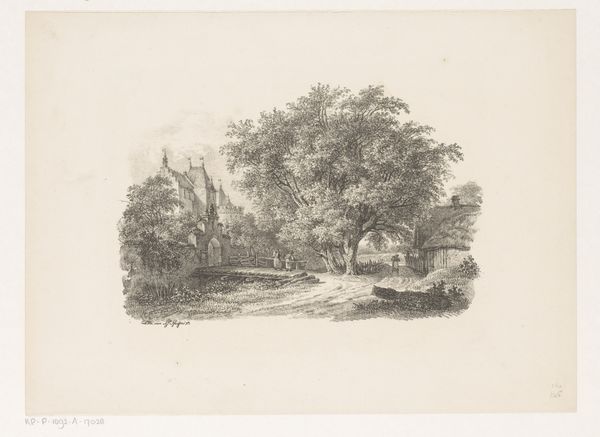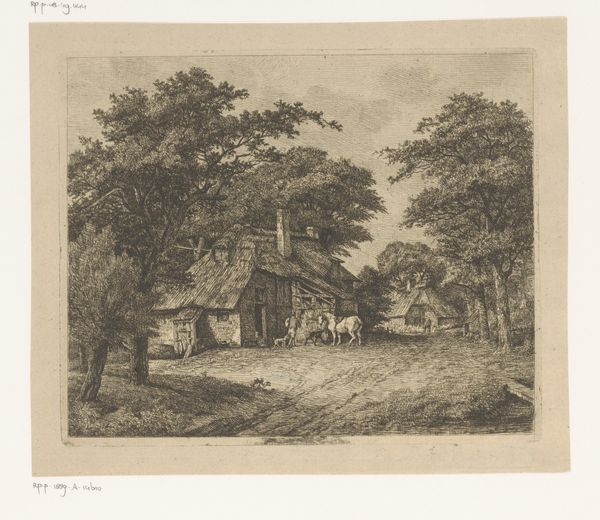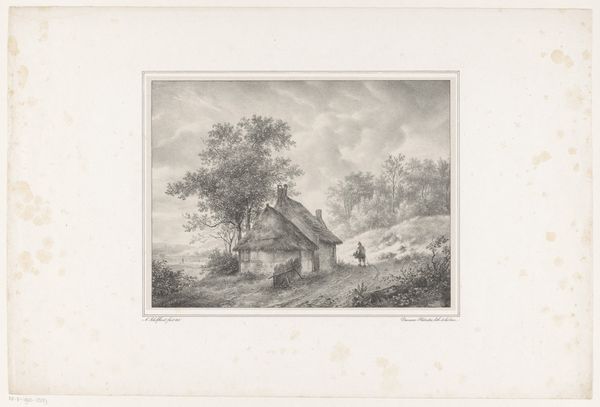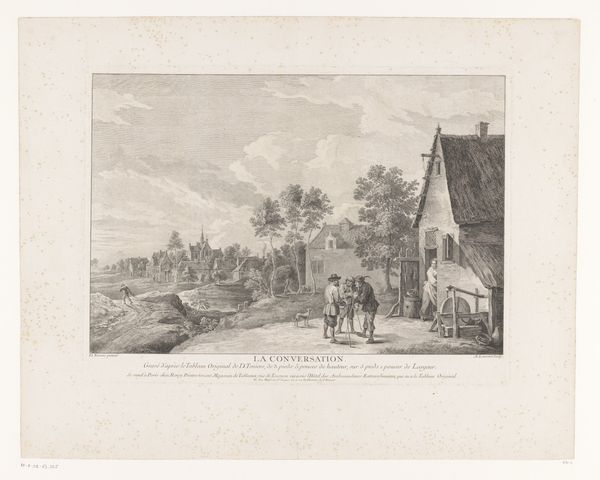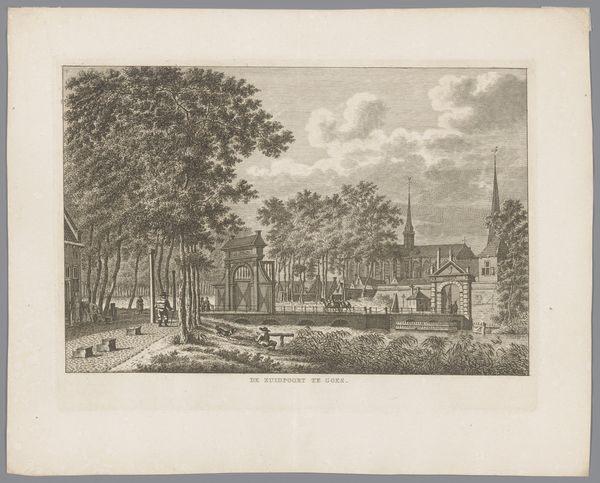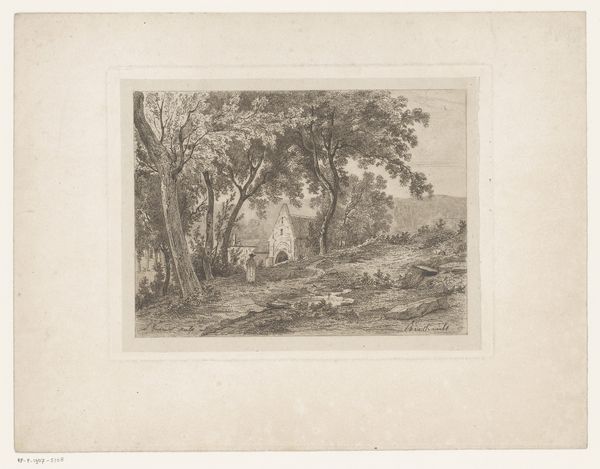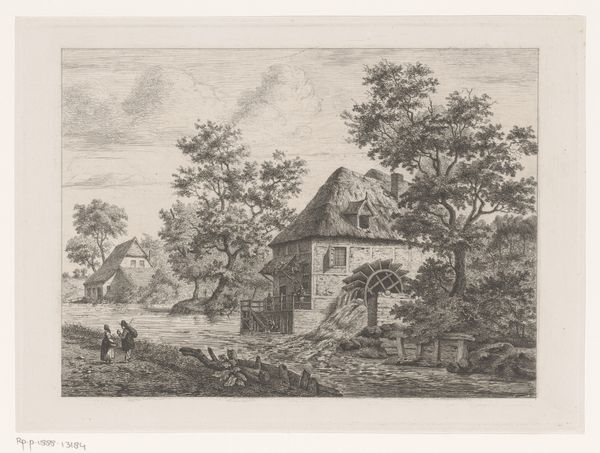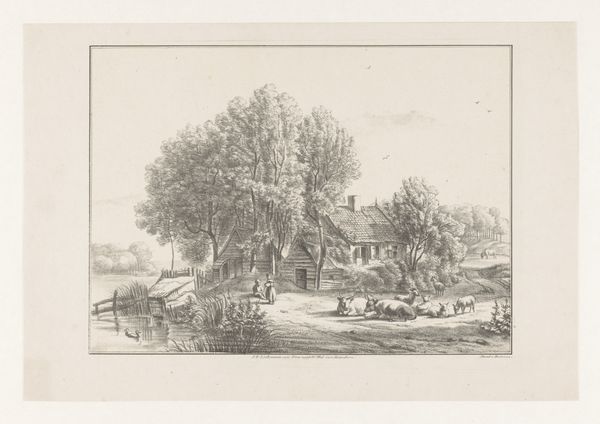
print, engraving
# print
#
landscape
#
engraving
#
realism
Dimensions: height 268 mm, width 213 mm
Copyright: Rijks Museum: Open Domain
Curator: Welcome. Here we have a piece by Bruno van Straaten entitled "Landweg met huizen," which translates to "Country Road with Houses," dating from around 1858 to 1859. It's an engraving. Editor: There's such a quiet, dreamlike quality to it, isn't there? Like stepping into a memory. The light feels muted and soft. Curator: The engraving process itself, incising lines into a metal plate, lends a certain graphic starkness, but also allows for incredibly fine detail. Note the attention to the rendering of foliage, and the architecture. It emphasizes a lived environment shaped by the interaction of people and natural resources. Editor: Exactly! I love the details: the people gossiping outside the house, the figure paused on the road. They add this wonderful narrative element to what could be just another landscape. Curator: Realism as a movement pushed artists to depict scenes from everyday life with as much fidelity as possible, avoiding idealization, focusing on representing society in a more straightforward way, particularly including rural subject matter. Editor: It's amazing how a seemingly simple scene, houses along a road, can evoke such a strong sense of place. And think of all the unseen labor that is hinted at just beyond what is visualized—from construction to resource extraction to trade routes. Curator: The availability and cost of materials—metal, paper, printing presses, engraving tools—all factored into both the possibility of creating this artwork and who its potential audience could have been. Editor: I’m struck by how the black and white tones almost add a layer of timelessness, as though this place exists outside of any particular moment, constantly there just beyond our sight. Curator: Considering its production, “Landweg met huizen” also acts as a historical document, recording social relationships through labor, resources, and their relationship to nature and one another during this moment in history. Editor: Ultimately it's this lingering feeling of being "there," witnessing this peaceful scene from long ago, that I connect to the most. Curator: Agreed. It provides a unique window into both Van Straaten's artistic practice and the wider material realities of mid-19th-century life.
Comments
No comments
Be the first to comment and join the conversation on the ultimate creative platform.
